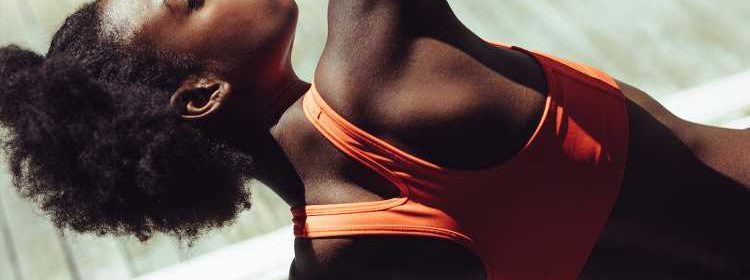Period Yoga is a Thing, and Here's How it Can Help Your Cramps

Historically, yoga was an oral a tradition deeply rooted in religion and focused on spiritual growth and control over the mind and emotions. Over the thousands of years of practice across the globe, yoga has evolved from its original roots and developed into a wide array of philosophies, exemplifying the need and desire for a more modern approach that meets the demands of Western life.
While the nuances of classical yoga are still present, yoga as we know it has become both a way for people to connect to themselves and a method for exercise and relaxation. Often used to build better self-awareness, increase flexibility, and aid in digestion, period yoga canalso be effective in treating pain or period cramps.
Period Pain is Real
Nearly all women suffer from premenstrual symptoms at some point in their life and up to 15% suffer from extreme period pain, called dysmenorrhea. As the uterus contracts throughout the menstrual cycle, it cancause cramping and pain in the abdomen and lower back. This type of muscular pain is a result of the uterine muscles pushing against surrounding blood vessels and temporarily cutting off oxygen to the muscles.
Headaches are another period pain that often happen due to fluctuating levels of estrogen and progesterone. Though modern medicine suggests the use of painkillers and heat therapy to treat menstrual aches, there’s another, more holistic approach.
Ayurveda – Natural Healing
According to Ayurveda, a 5,000-year-old system of natural healing, each person contains three main elements – wind, fire, and earth. Every individual has a unique makeup of each element that shapes the characteristics of their mind and body, with one or two typically being dominant over the others. If you have a dominance of wind, your dosha is Vata. If fire is your main element, Pitta is your dosha. Kapha is the dosha associated with a dominant earth element. While each person has a single or dual dominant element present, everyone has a combination of the three and, by Ayurvedic definition, good health means that all elements are balanced.
In this form of Eastern medicine, the menstrual cycle is used as a window into the overall health of a woman. Menstruation is a time of cleansing and rejuvenation, as period blood flows downward and out of the body. And, while menstrual pain is seen as common and even normal in Western society, it is not viewed as such in Ayurvedic traditions. Instead, it’s seen as an imbalance that can be adjusted with the use of holistic methods of healing, such as restorative yoga.
The use of yoga for period pain relief isn’t exactly new. Being as old as it is, yoga has been used to heal ailments for thousands of years. However, as modern society is growing more and more interested in alternative pain management, we feel that highlighting the ways in which both a regular practice and targeted poses can provide relief for period pain – both physical and hormonal. Poses that ease the muscles and relax the mind can prove useful in easing the effect of premenstrual symptoms from cramps to headaches to insomnia.
Bandhas ease cramps
Bandhas, in particular, can help ease cramps. Sanskrit for “lock”, “seal”, or “bind”, there are three bandhas that are essentially muscular contractions designed to help you focus on your awareness and breath, and move through postures with a sense of lightness. Mula bandha is the steady contraction of the perineum (the muscle between your genitals and anus) and aids you in experiencing a sense of lightness. Uddiyana bandha is a muscular contraction four inches below the navel, allowing you to bring your breath into your rib cage. Lastly, Jalandhara bandha, the contraction of dropping your head to your chest. This lock is more rare but is said to prevent energy from escaping out of your upper body.
Upavistha Konasana
Upavistha Konasana (Wide-Angle Seated Forward Bend) is an asana that is great for anyone with cramps or lower back pain. Sit on your mat with your legs open in front of you at, slightly wider than a 90 degree angle. Press down through your thighs and inhale and lengthen your spine. Exhale and start to walk your hands to the front of your mat, keeping your neck relaxed. If this is as far as you can go, rest in the pose for 10 to 15 breaths. To deepen the pose, hook onto your big toes with your fingers.
Source: Read Full Article